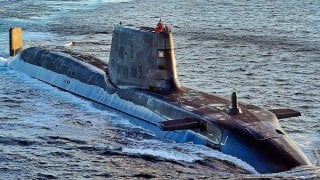Astute: The Royal Navy Has Submarines as 'Quiet as a Dolphin'
The Astute class is among the most capable submarines in service today. Each boat is equipped with world-leading sensors, carries Tomahawk Land Attack Cruise Missiles and Spearfish heavyweight torpedoes, and can circumnavigate the globe submerged, producing its own oxygen and drinking water.
The Astute class are among the most capable submarines in service today.
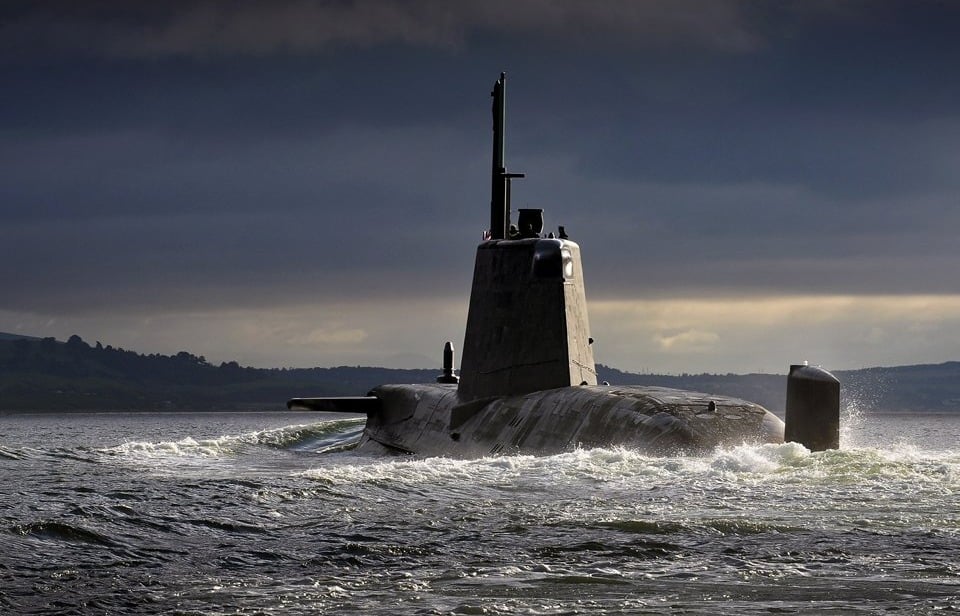
Each boat is equipped with world-leading sensors, carries Tomahawk Land Attack Cruise Missiles and Spearfish heavyweight torpedoes, and can circumnavigate the globe submerged, producing its own oxygen and drinking water.
Only the U.S. Navy can match these underwater warships.
As noted by naval analyst H I Sutton, the Astute-class subs are the only ones outside the U.S. Navy able to launch the Tomahawk, a capability that truly sets them apart.
Quite Astute
The Astute-class program began in February 1986 when the Ministry of Defence (MOD) launched a number of studies intended to determine the capabilities and requirements for the replacement of its Swiftsure and Trafalgar-class fleet submarines.
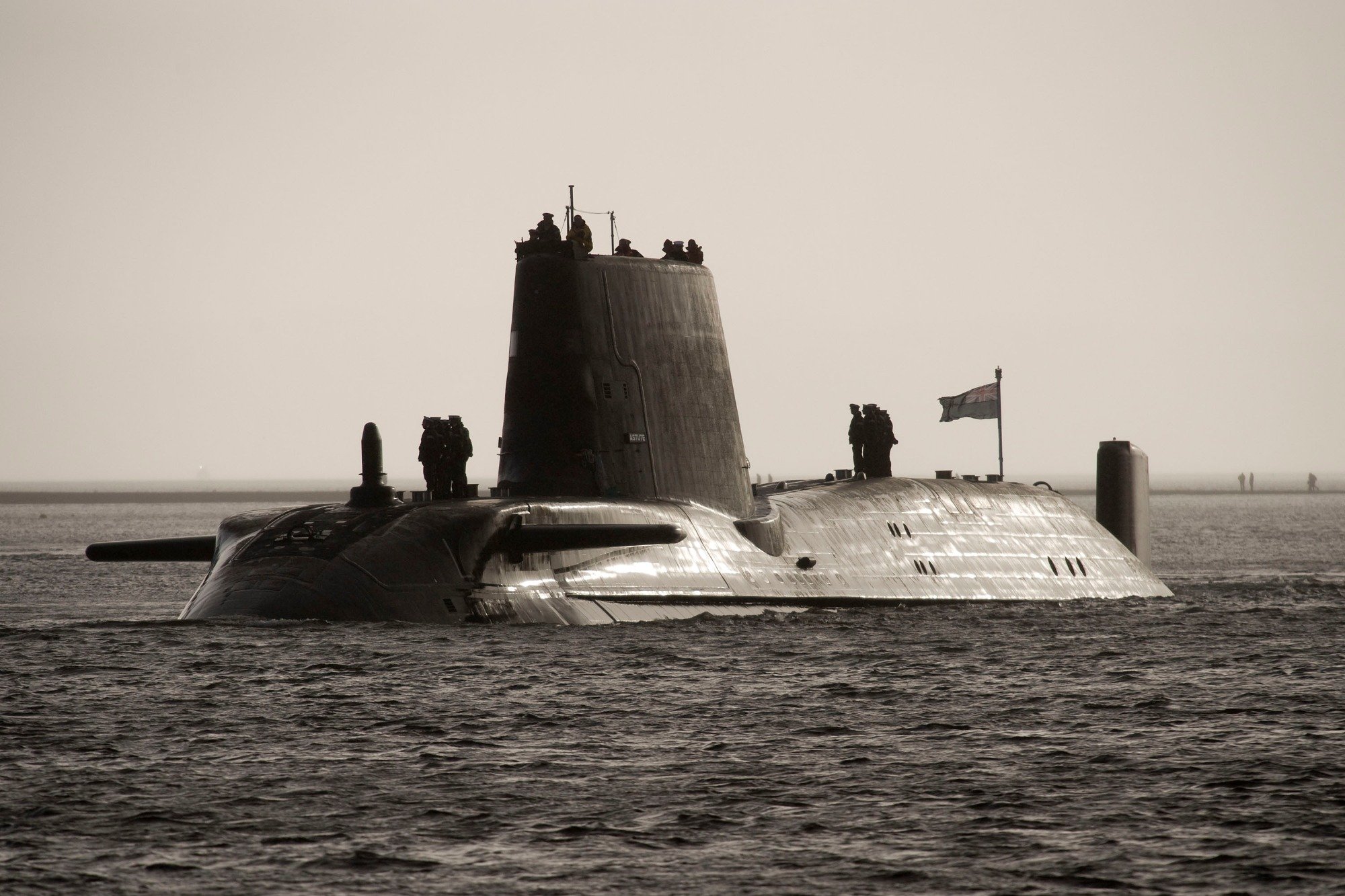
Each of the submarines costs a reported £1.6 billion to build, but the capabilities offered are essentially priceless. The Astute-class boats are roughly 97 meters (318 feet) in length and have a crew of around 100 sailors, with a capacity for 109 in total.
The final two of the planned seven of the class, the future HMS Agamemnon and HMS Agincourt, are now under construction in Barrow, England. The boats are being constructed by BAE Systems Submarines at Barrow-in-Furness and the first of class, HMS Astute, was launched by Queen Consort Camilla, then-Duchess of Cornwall, in 2007. The submarine was commissioned in 2010 and declared fully operational in May 2014.
Astute-Class: Quiet as a Dolphin
Each of the Royal Navy's nuclear-powered Astute-class fleet submarines (SSNs) has been outfitted with many technological firsts, including not having an optical periscope.
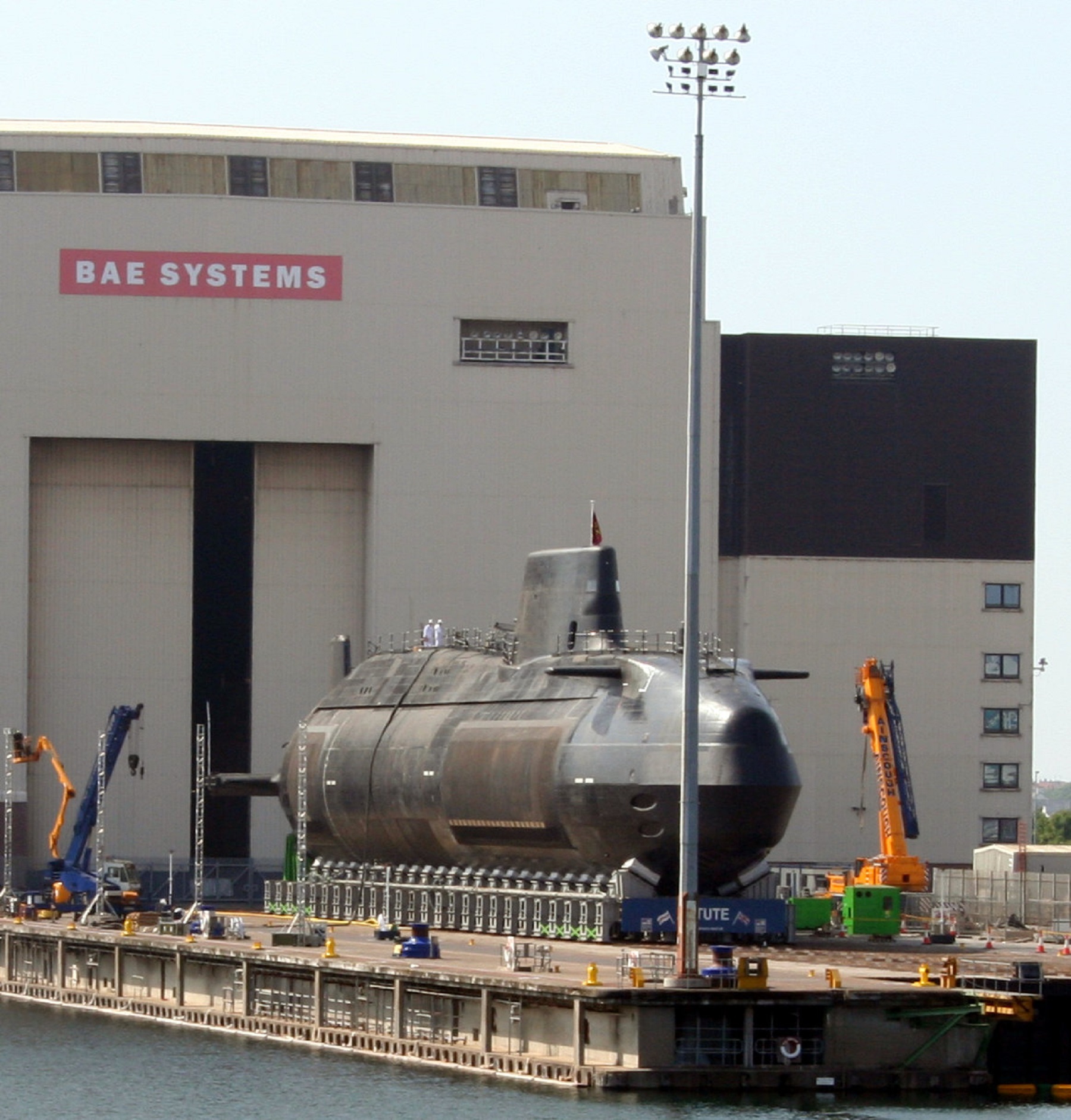
Instead, high-specification video technology has been employed, which enables the crew to scan the horizon and get a 360-degree view to address any potential threat.
In addition, unlike other nuclear-powered submarines, the Astute-class was developed to utilize state-of-the-art anti-acoustic tiles. Each hull is fitted with more than 39,000 acoustic tiles that mask the vessel’s sonar signature and allow the submarines to glide through the water almost silently.
The little noise the boats give off has been compared to that of a "baby dolphin."
Unlimited Endurance
The fleet attack submarines are powered by a Rolls-Royce PWR2 (Core H) reactor and fitted with a pump-jet propulsor, the same reactor that was developed for the Royal Navy's Vanguard-class ballistic missile submarines.
That particular nuclear reactor, which powers the submarines and has a 25-year lifespan before needing to be refueled, is also used to recycle air and water. It provides a theoretically unlimited endurance for the submarine and can circumnavigate the globe without surfacing. Each of the boats is typically supplied with about 90 days of food.
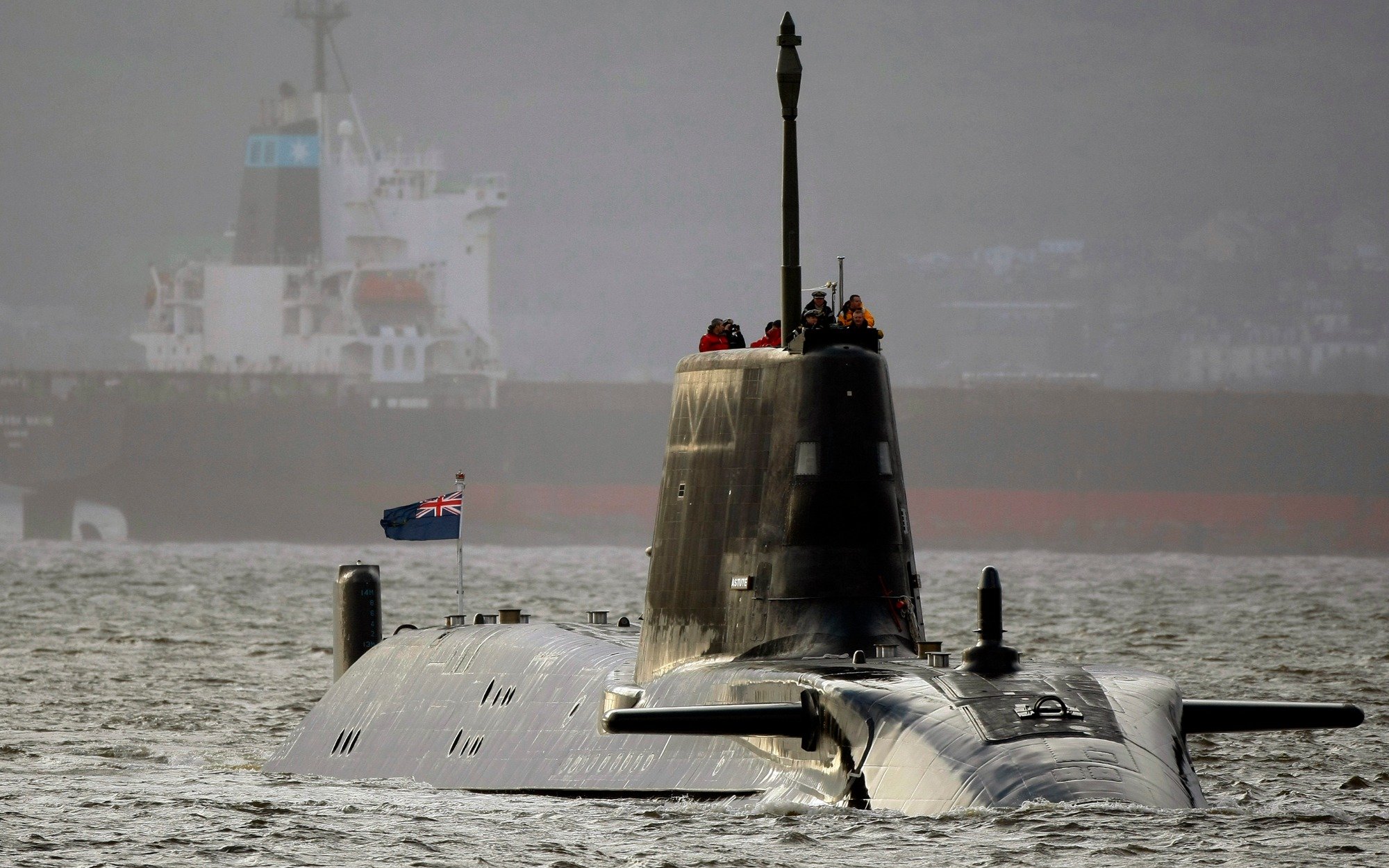
As deployments on the submarines can vary in length, with overall assignments lasting three years, two full crews rotate shifts to allow the vessel to remain at sea for as long as possible.
Crews may serve between 60 and 80 days before resurfacing and rotating out.
True Attack Subs for the Royal Navy
The Astute-class submarines have stowage for 38 weapons and typically carry a mix of Spearfish heavy torpedoes and Tomahawk Block IV cruise missiles, with the latter capable of hitting a target within a few meters, to a range of 1,000 miles (1,600 km). The missiles can be also re-directed at a new target mid-flight, and can "beam" back images of the battlefield to its mother sub.
Each of the boat's Spearfish heavyweight torpedoes – which are nearly two tonnes – can further attack targets up to 14 miles away (which can increase to 30 miles at low speed) and is capable of blowing an enemy submarine clean out of the water. Guided by either copper wire or inbuilt sonar, the Spearfish delivers 660 lbs of explosive charge either when it impacts with the intended target or via an acoustic proximity fuse underneath.
The submarines' countermeasures suite includes decoys and electronic support measures (ESM).
Moreover, the Astute Combat Management System (ACMS), which is an evolved version of the Submarine Command System (SMCS) used on other Royal Navy subs, was developed to receive data from sonars and other sensors and, using advanced data handling and algorithms displays this data as real-time images on the command consoles.
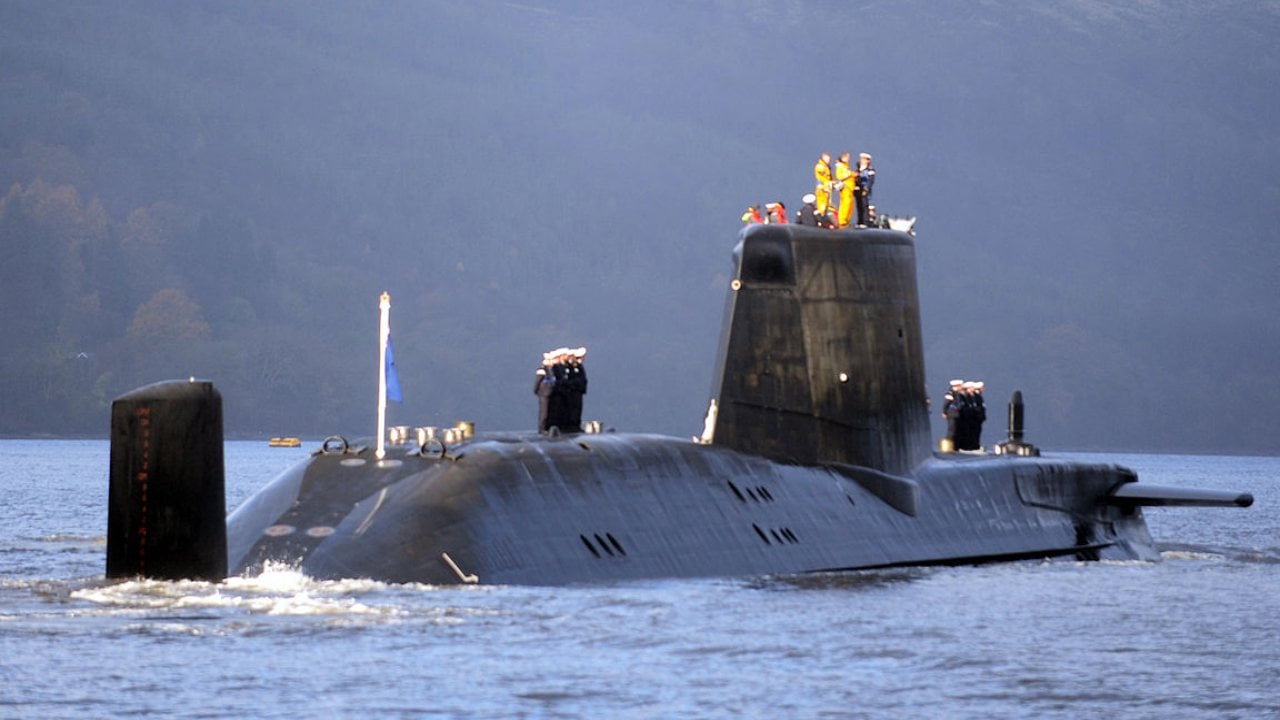
For detecting enemy vessels, the Astute-class submarines are equipped with Sonar 2076 - an integrated passive/active search and attack sonar suite with bow, intercept, and towed arrays.
The Astute-class boats are also fitted with a dry deck shelter, which allows Special Forces – such as the Royal Marine Commandos or Royal Navy Special Boat Service (SBS) operators – to deploy whilst the submarine is submerged.
Author Experience and Expertise
Peter Suciu is a Michigan-based writer. He has contributed to more than four dozen magazines, newspapers, and websites with over 3,200 published pieces over a twenty-year career in journalism. He regularly writes about military hardware, firearms history, cybersecurity, politics, and international affairs. Peter is also a Contributing Writer for Forbes and Clearance Jobs. You can follow him on Twitter: @PeterSuciu.
All images are Creative Commons.


